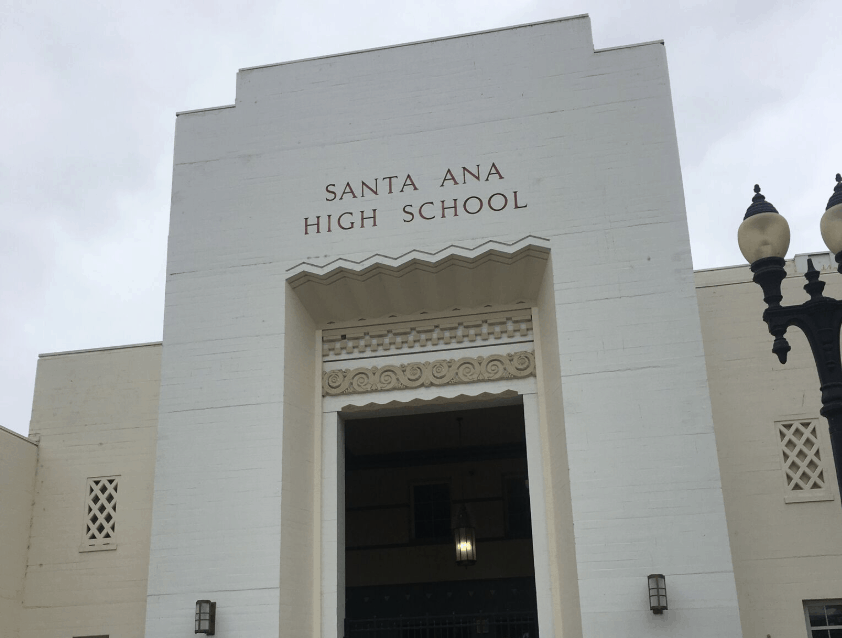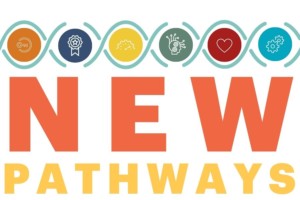Santa Ana USD Provides Next-Gen CTE Pathways

By: Tom Vander Ark and Emily Liebtag
Take a quick tour around Santa Ana, California and you’ll see local tiendas, single story homes, low rise multifamily units and school buildings about every five or six blocks. You’ll find students and families welcoming you with pride on the front steps of their schools and welcoming you to their community hubs.
What is less apparent is that Santa Ana is one of the most densely populated cities in the U.S. and has an almost 30% homelessness rate (see the definition from the National Health Care for the Homeless). The city is north Orange County, a world away from Newport Beach and the wealthy coastal communities of South Orange.
For the last five years, Santa Ana Unified School District (SAUSD) has been rethinking teaching and learning to better serve their families and 50,000 students. The work was initiated by school-based plans for personalized learning. Career pathways were added at the secondary level and coordinated districtwide to ensure an equity of offerings.
District leaders have also worked hard to ensure educators are multilingual and representative of the families and students that they work with. At most campuses, there is strong evidence of community engagement and student and family support.
SAUSD, with the help of Daniel Allen and Wes Krisel (now working in Fullerton USD), won an XQ grant for this commitment to embedding learning into the community and engaging students in learning that builds on their strengths. Círculos Advanced Learning Academy “is developing a student-centered culture that features a strong peer-to-peer support system, connections with a circle of local mentors, and a commitment to place-based learning.”
Under the leadership of Don Isbell, Director of CTE, most schools have career pathways for students to explore (visit the SAUSD CTE page for more and see a sample of the pathways in the image below). Isbell has led a revolution to shift what CTE means and dismantle the notion that it is for students who aren’t succeeding in other core subject areas (i.e. math and literacy) and raised the bar for what these pathways look like for all students.
On a recent visit to three Santa Ana schools, their commitment to vibrant community connected career pathways was evident.
Valley High School
Valley High School is a sprawling open concept comprehensive high school built 60 years ago on a 55-acre site. It serves about 2,300 students on one campus.
A Family and Community banner greets visitors at the entrance. We visited with parents taking leadership courses in the wellness center (increasingly common across SAUSD). Some parents had students that were SAUSD alumni but still come back to access the wellness center resources and courses.

Next to the wellness center is the office of High School Inc., a nonprofit organization setup to facilitate work-based learning experiences across six career pathways.
What is going on inside of Valley is a blend of traditional learning methods with next-gen career and technical education. The school is led by Hector Galicia who welcomed back his staff this year by singing mariachi and instilling a sense of pride in his team for their culture and rich history as a community.
We walked through several of the career pathways offered at Valley, including their health, culinary arts, new media and automotive paths.
The culinary student team, led by Chef Tiffany Heremans, prepared a meal for us and shared how they train for national culinary competitions. They have won the Cooking Up Change Challenge multiple years in a row. The competition invites students to prepare a healthy high school meal option using a specific budget and ingredients.

Santa Ana High School
The oldest high school in the district has some of the freshest ideas when it comes to meaningful pathways and projects. The Latino International Film Institute works with students to create documentaries about relevant topics in their lives and community. They also work with several other schools in the district as part of the Youth Cinema Project. Students (several see in the panel below) work to dream, create, direct and produce their films.
Students shared their stories of growth and change within the Santa Ana schools they attended. The shared that the unique opportunity to incorporate film into a school project has brought them a sense of new possibilities and options. Many shared that some aspect of film (marketing, production, writing, etc.) is in their plans for their future and that they are hoping to keep growing their skills before they leave Santa Ana High.
Lathrop Intermediate School
Whoever said middle school couldn’t be a place of joy and thriving students hasn’t yet visited Lathrop Intermediate. Serving low resource neighborhoods in Santa Ana hasn’t stopped the staff from focusing more on opportunities and assets than the challenges their students face.
 Lathrop is led by Principal Stuart Cadwell who has been in SAUSD for over a decade. Along with his support, the school decided to open up several classrooms to create bigger open and collaborative spaces. They added a STEM Lab where students work through Project Lead the Way and unpack engineering ideas and concepts.
Lathrop is led by Principal Stuart Cadwell who has been in SAUSD for over a decade. Along with his support, the school decided to open up several classrooms to create bigger open and collaborative spaces. They added a STEM Lab where students work through Project Lead the Way and unpack engineering ideas and concepts.
Stefanie Phillips has been in the district for five years and superintendent for two. She has reiterated the district’s goal “to prepare students with 21st-century skills to graduate from high school and to become productive contributors to our society.” (Check out Dr. Phillips report to the school board.) She has maintained the district’s commitment to career education while boosting the focus on equity.
Visit Santa Ana to see well-developed career pathways, community partnerships and strong student supports.
For more, see:
- Santa Ana Unified Creates Incredible Pathways for Students K-12
- A Conversation with David Haglund, Santa Ana Unified
- Projects that Learn (How SAUSD used projects to advance it’s change agenda)
- David Haglund on Lessons Learned in Santa Ana
Stay in-the-know with all things EdTech and innovations in learning by signing up to receive the weekly Smart Update.









0 Comments
Leave a Comment
Your email address will not be published. All fields are required.